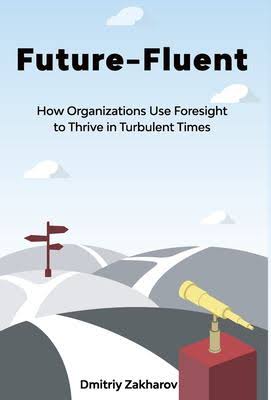By the time you read this, hurricane Sandy will be pounding the northeast US. I’m not one to let that stop me; this post has been pre-scheduled. For those of you who have come late to this blog–or who need a reminder as to what inspired Equations of Everyday Life–here is the first part of two reruns. If I don’t post something new within a week, send out a search party.
The Laws of Kid and Canine Chaos
“Chaos is inherent in all compounded things.” –Buddha
Part A, the equation of canine chaos: As the number of dogs in any household, or otherwise confined environment increases, the chaos generated by said dogs increases exponentially.
The math on this one is easy and so is the logic. Let’s start with an easy equation:
Cd=D2
Simply stated, where Cd equals canine chaos and D equals the number of dogs present, then canine chaos equals the number dogs present squared. So two dogs equals four times the chaos, three dogs equals nine times the chaos, four dogs 16 times, and so on.
 As for the logic, that’s also easy. Assuming that dogs are a pack animal, then each chaotic activity started by one, will be joined in by the others. This includes, but is not limited to, barking, fighting, knocking over the trash, attacking the mailman, biting Aunt Millie, pooping in the hallway, stealing your lunch and whatever other crazy things canines do. So, if there are two dogs, it will happen twice as often and be twice as chaotic each time. If there are three dogs, it will happen three times as often and be three times as chaotic. You get the idea.
As for the logic, that’s also easy. Assuming that dogs are a pack animal, then each chaotic activity started by one, will be joined in by the others. This includes, but is not limited to, barking, fighting, knocking over the trash, attacking the mailman, biting Aunt Millie, pooping in the hallway, stealing your lunch and whatever other crazy things canines do. So, if there are two dogs, it will happen twice as often and be twice as chaotic each time. If there are three dogs, it will happen three times as often and be three times as chaotic. You get the idea.
Disclaimer: this equation is an average. Obviously, geriatric dogs will create less chaos and puppies are off the chart crazy. The breed of dog is a factor as well. (See figure X, schipperkes, and figure Y—as in “why?”—labs)

Figure X. Schipperke [Pronunciation: skip-it; origin: Dutch, meaning little s&$^%#–er, I mean, “little captain”] Noun: 1. a furry black dog of Belgian origin 2. trouble waiting to happen
Take for example, our own pack of three (if you can believe that) schipperkes. They have the uncanny knack of lulling us into complete complacency. Then a chipmunk runs across the lawn and our former state of quietude is instantly transformed into the canine equivalent of One Flew Over the Cuckoos Nest. I’m sure insanity is zoonotic. You get it from your pets.
We also need to consider that there are limits to the human capability to distinguish between degrees of canine chaos. At some point, the saturation point is reached, and the perceived chaos is effectively infinite. Beyond this, addition of more dogs to the environment cannot inflict any measurably higher degree of pain. These limits may vary with the individual. I, for instance, have lived with multiple dogs for years and therefor have a higher threshold of tolerance than the average person. On the other hand, my wife is a veterinarian and is effectively immune. Our dogs could stage World War III on top of her head in the middle of the night, and she would sleep through it. [NOTE: Part B, the Law of Kid Chaos, coming soon in a future post.]
Text in the post ©2012 Mark Sackler






Cool post. Just a small error in the math – if Cd = D^D, then 3 dogs equal 3x3x3=27 times the chaos, and 4 dogs equal 4x4x4x4=256 times the chaos. That increase is a bit extreme – perhaps Cd = D^2 (leading to the results you mentioned) is more accurate. 🙂
Wow. Can’t believe that nobody noticed that the first time (can’t believe I didn’t). It has been fixed. You are correct in your assumption that it should be Cd=D^2. Thanks for pointing that out.
It occurred to me as well, after you posted the fix, that exponentially would have meant e^D, which isn’t as far off ad D^D, but still pretty extreme. Also, your math doesn’t seem all too case sensitive. By convention, variables/parameters are lower case, as well as the function indicator should match the parameter for diff/int reasons, where using d would be a poor choice of a variable/parameter designation in any case.
Nonetheless, I was very amused by your post 🙂
I think I’m going to be laughing all day about the “Meth Lab” photo. Very clever. Thank you, I needed an uncontrollable bout of laughter today.
I have nominated you for the “One Lovely Blog Award’. Congratulations! I nominated you because your blog is SPECIAL for me, with the contents you bring out, and the particular style of your presentation, with depth and insights! Here is the link:
http://actualfreedomjustine.com
2012/10/31
Of course, I always appreciate other bloggers thinking about me. But this “award” epitomizes what I wrote in BLAHS post #2 here. https://millenniumconjectures.com/2012/10/15/the-blahs-2-millard-fillmores-bathtub/ This one requires the “nominee” to nominate 15 other bloggers for the “award.” If the Federal Trade Commission were to intervene, the language upon presentation would be required to read “Congratulations. You have just been nominated for a chain letter.” 15^7=170 million (there are 50 million wordpress blogs including commercial and non-active, that’s more than three each.) 15^9=38 billion, that’s 6 for every person alive today. Sorry to be a spoil sport, but sometimes you just have to do the math.
Good one. Our geriatric cat does nothing but sleep, but when she and her brother were kittens, they would wake in the night and go careening off the bedroom walls. All we could do was hide under the covers to avoid the flailing claws.
And I totally agree about the chain letter thing. All such go immediately into the trash.
We have schipperkes . When they were puppies, I described trying to takeaway nap with them in the room as like trying to sleep inside a live pinball machine. Oh,and since I equated those blog awards with chain letters, I have been “nominated” for yet another one. You would think they actually would have read my blog first!